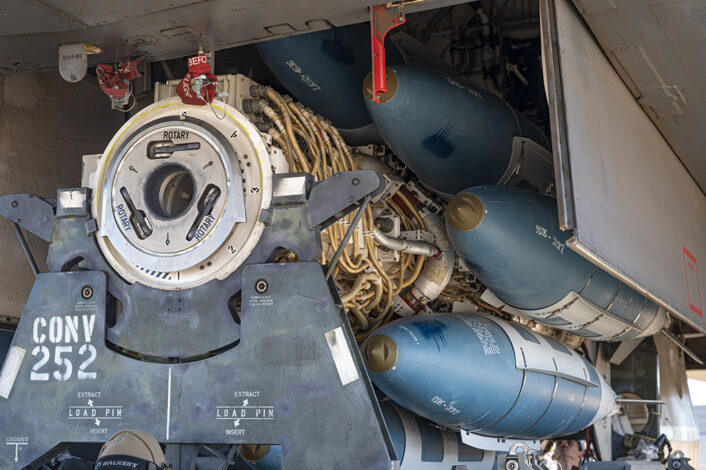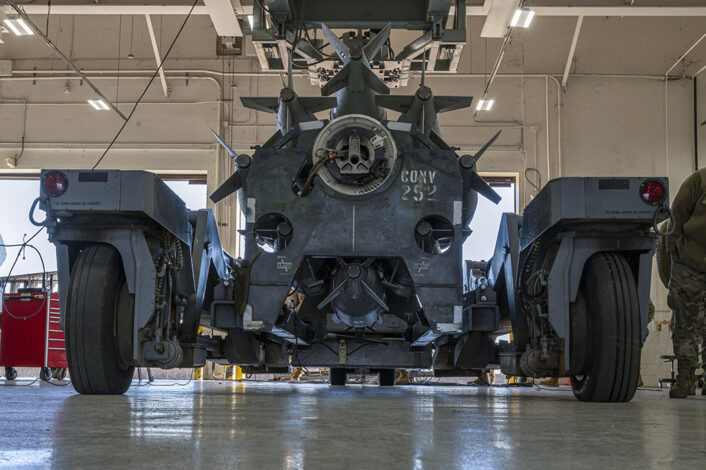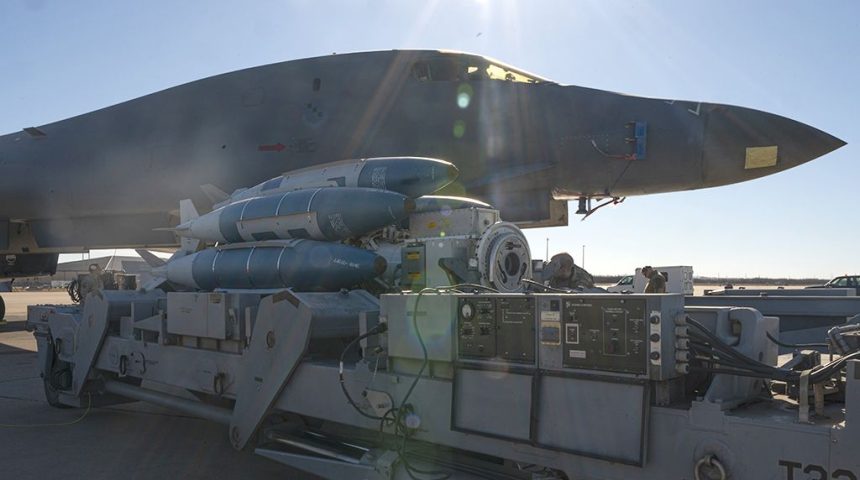Weapons Loaders at Dyess Air Force Base revived a capability unused for three decades.
The U.S. Air Force has recently released some interesting photos showing the activity carried out a Dyess Air Force Base, Texas, earlier this month. In fact, on Jan. 9, 2023, personnel of the 7th Aircraft Maintenance Squadron used the Launcher Load Frame (LLF) to pre-load a munition package that was then loaded on a B-1B Lancer.
The concept for pre-loading munitions has been around since the B-1 first entered service but has gone unused for 30 years until 7 AMXS resurrected the capability. Using LLF, weapons loaders can pre-load munitions on a launcher, under the cover of a facility, prior to transporting the entire launcher/munition package to the flight-line for loading on the aircraft.

The photos released by the Air Force show the LLF packed with 2,000 lb GBU-31 JDAMs (Joint Direct Attack Munitions) being loaded on the internal weapons bay of the BONE (the nickname of the B-1 – from “B-One”).
The capability was thought for use with nuclear bombs, but the B-1 bomber’s mission was reviewed in 1994 and the type converted to conventional-only weapons with a physical conversion that took place between 2007 and 2011, with the Strategic Arms Reduction Treaty (START). Nevertheless, the LLF will now be used to generate conventional munitions packages out of the view of near-peer intelligence, surveillance and reconnaissance capabilities.

The use of LLF is just the last in a series of upgrades to the B-1 fleet aimed at making the Lancer more capable in the conventional scenario. Other upgrades announced in the past are the internal bay capacity increase and the return of external hardpoints that were deactivated following arms treaties with Russia. The external hard points were initially thought for the B-1’s nuclear strike mission too, but they could be used to carry JASSMs (Joint Air-to-Surface Standoff Missiles) and, possibly, hypersonic weapons externally.
The expansion of the BONE’s capabilities proceeds even though the U.S. Air Force is preparing to replace the B-1 with the new B-21 Raider 6th generation stealth bomber. The divestment of 17 B-1B aircraft from a fleet of 62 Lancers has been completed in September 2021. In accordance with the National Defense Authorization Act, the 17 B-1B aircraft were retired from a fleet of 62, leaving 45 in the active inventory.
According to the Air Force Global Strike Command, out of the 17 retired, one went to Tinker AFB, Oklahoma, as a prototype for structural repair actions; one went to Edwards AFB as a ground tester; and one went to Wichita, Kansas, to the National Institute for Aviation Research for digital mapping; and one went to Barksdale AFB, Louisiana, as a static display for the Barksdale Global Power Museum. The remaining 13 aircraft will be stored at the boneyard at the 309th Aerospace Maintenance and Regeneration Group at Davis-Monthan AFB in Type 4000 storage. Four of those will remain in a reclaimable condition that is consistent with Type 2000 recallable storage.
H/T to Ryan Chan for the heads-up!









